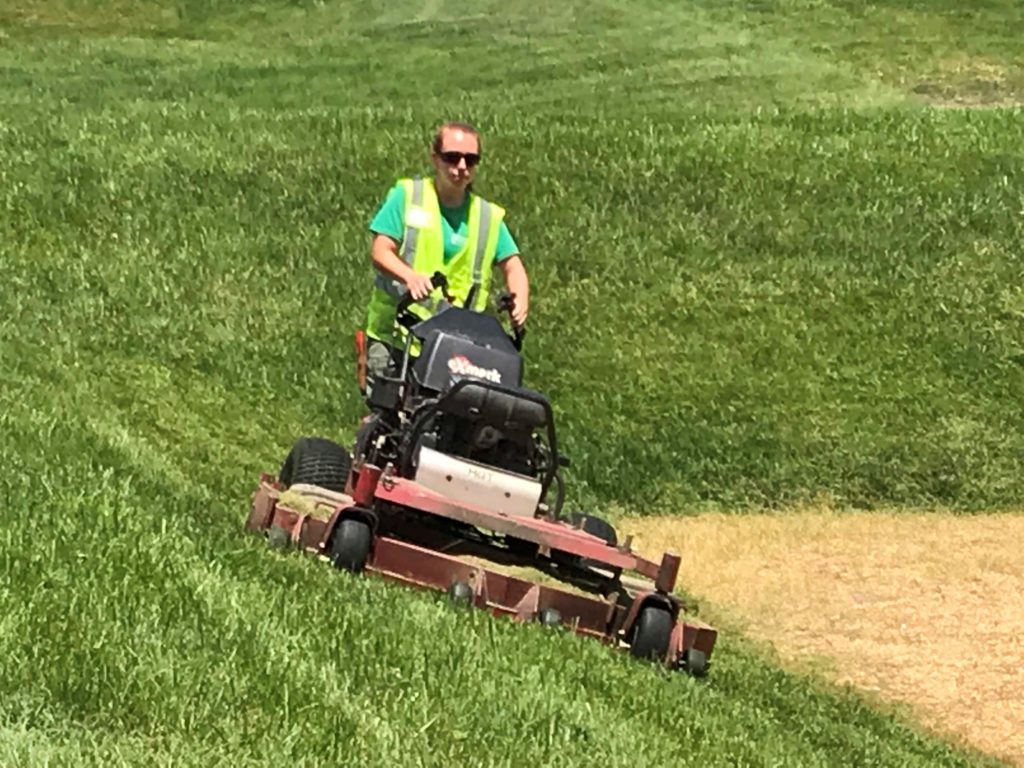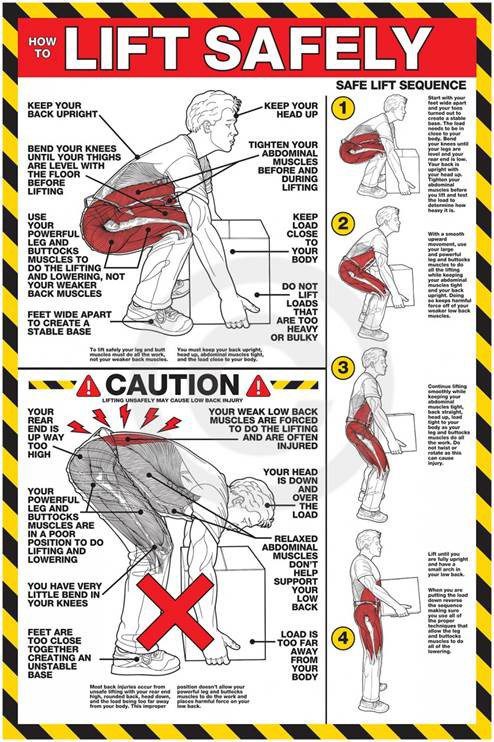By Dave Sanders, Director of Safety and Risk
 Highly physical work can be dangerous; landscape maintenance and construction are no exception. Every day our field teams are at risk of slipping, tripping and falling, getting cuts, and experiencing strains and sprains. The good news is that these injuries are mostly preventable, and by following simple proactive measures we can greatly reduce or eliminate hazards, keep our people safe, and improve productivity.
Highly physical work can be dangerous; landscape maintenance and construction are no exception. Every day our field teams are at risk of slipping, tripping and falling, getting cuts, and experiencing strains and sprains. The good news is that these injuries are mostly preventable, and by following simple proactive measures we can greatly reduce or eliminate hazards, keep our people safe, and improve productivity.
Common Causes
 Sprains and strains both refer to soft tissue damage: strains are overstretched, torn, or twisted tendons or muscles; sprains are ligaments that have suffered similar damage. Both types of injuries can happen suddenly. Common causes include walking or working on an uneven, sloped, or slippery surface, twisting or pivoting suddenly, falling or landing on the wrist or hand, and lifting heavy objects or lifting anything improperly. Strains, especially, can happen when sitting or walking in an awkward position for long periods of time.
Sprains and strains both refer to soft tissue damage: strains are overstretched, torn, or twisted tendons or muscles; sprains are ligaments that have suffered similar damage. Both types of injuries can happen suddenly. Common causes include walking or working on an uneven, sloped, or slippery surface, twisting or pivoting suddenly, falling or landing on the wrist or hand, and lifting heavy objects or lifting anything improperly. Strains, especially, can happen when sitting or walking in an awkward position for long periods of time.
Preventative Measures
Sprains and strains are painful and may require long recovery periods. The following practices can help prevent them from happening:
Personal Care
- Warm up properly before exercise or working: Warming up the muscles increases their range of motion and helps to avoid strains and tears to muscles and ligaments.
- Exercise regularly: Regular conditioning and stability exercises build strength, flexibility, and help prevent injuries.
- Follow a nutritious diet: Proper nutrition along with adequate rest helps us be more alert and focused, lowering the risk of injury.
- Wear appropriate footwear: Wear shoes with good traction and proper support for ankle and knee joints to help prevent twists and falls.
Work Environment
 Planning and identification: Before mounting/dismounting vehicles and equipment and before operating equipment, identify hazards and make sure safety guards are in place. Watch out for slippery or uneven surfaces or obstacles that may cause an accident, and do not operate on wet slopes or on slopes greater than the manufacturer’s recommendation. If it looks unsafe, it probably is.
Planning and identification: Before mounting/dismounting vehicles and equipment and before operating equipment, identify hazards and make sure safety guards are in place. Watch out for slippery or uneven surfaces or obstacles that may cause an accident, and do not operate on wet slopes or on slopes greater than the manufacturer’s recommendation. If it looks unsafe, it probably is.- Practice good housekeeping: Ensure that work areas and surrounding walkways are clear of debris or clutter. That way, once equipment and tools are being used, there are no mishaps.
- Use protective equipment: In addition to the requisite PPE, use handles when carrying loads, and use knee and shoulder pads to protect yourself when kneeling or carrying materials.
- Get help when needed: If material weighs more than 50 pounds, ask for help. Make sure you lift with your legs and hold the load close to your body.
- Stay hydrated and take a break: Drink plenty of water, as dehydration and heat stroke can happen rapidly. Sitting or standing in one position for too long or performing repetitive actions can put undue strain on muscles. Take regular breaks and stretch to release the muscles.
Training
- Review safety practices regularly: Training is critical to maintaining a safety-first attitude. Examples are our daily “Stretch and Flex” and proper lifting techniques.
- Become informed of early signs of strains and sprains: The most common signs of strains are inflammation, pain or weakness in the back, legs, feet or knees. The most common early signs of sprains include pain, swelling, and limited movement around the joints in your wrists, ankles, and knees.
- Know what to do in case of an injury: Follow our workplace guidelines and policies:
-
-
- In case of a life-threatening emergency, call 911.
- Report an injury immediately to your supervisor.
- Your supervisor should then call our 24-7 injury hotline (Dr. Blink) for initial evaluation of the injury to ensure proper first aid and treatment.
-
For many minor injuries, such as a simple strain, immediate treatment using rest, ice, compression, and elevation may be all that is needed. With proper aftercare, you can minimize the chance of permanent damage and reduce potential complications.
The key to preventing strains and sprains is mindfulness. Be aware of your surroundings and do not be embarrassed to ask for help or to apply an abundance of caution—your safety and wellbeing are always a priority. We can’t prevent all injuries in the workplace, but by following precautionary measures we can greatly reduce them.
 Planning and identification: Before mounting/dismounting vehicles and equipment and before operating equipment, identify hazards and make sure safety guards are in place. Watch out for slippery or uneven surfaces or obstacles that may cause an accident, and do not operate on wet slopes or on slopes greater than the manufacturer’s recommendation. If it looks unsafe, it probably is.
Planning and identification: Before mounting/dismounting vehicles and equipment and before operating equipment, identify hazards and make sure safety guards are in place. Watch out for slippery or uneven surfaces or obstacles that may cause an accident, and do not operate on wet slopes or on slopes greater than the manufacturer’s recommendation. If it looks unsafe, it probably is.